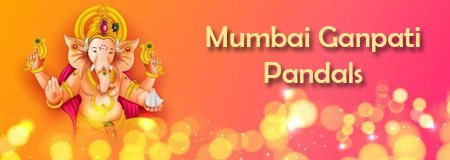Ulagalantha Perumal Temple, Kanchipuram
Ulagalandha Perumal Temple is a temple dedicated to Vishnu located in Kanchipuram, Tamil Nadu, India. Constructed in the Dravidian style of architecture, the temple is glorified in the Naalayira Divya Prabandham, the early medieval Tamil canon of the Alvar saints from the 6th through 9th centuries CE. It is one of the 108 Divya Desams dedicated to Vishnu, who is worshipped as Ulagalantha Perumal, and his consort Lakshmi as Amuthavalli. The temple is believed to have been built by the Pallavas, with later contributions from the medieval Cholas, Vijayanagara kings, and Madurai Nayaks.
The temple is found in Big Kanchipuram, and situated close Kamakshi Amman Temple. The temple complex actually houses four Divya Desams in its different precincts, namely, Tirukkaravanam, Tirukarakam, Tiruneerakam, and Tiruürakam, that last of which is present with in the sanctum sanctorum of the main temple.
Vamana, the Brahmin dwarf, and one of the ten avatars of Vishnu, is held to have appeared here to quell the pride of the asura king Mahabali. As Ulagalantha Perumal, he is believed to have appeared before king Mahabali and the Alvars. Six daily rituals and a dozen yearly festivals are held at the temple, of which the chariot festival, celebrated during the Tamil month of Chittirai (March–April), is the most prominent. The temple is maintained and administered by the Hindu Religious and Endowment Board of the Government of Tamil Nadu.
Legend
The Bhagavata Purana describes that Vishnu descended as the Vamana avatar to restore the authority of Indra over Svarga, as it had been taken by Mahabali, a benevolent asura King. Bali was the grandson of Prahlada. King Mahabali was generous, and engaged in severe austerities, winning the praise of the world. With the praise from his courtiers and others, he regarded himself as the most powerful being in the world. Vamana, in the guise of a short Brahmin carrying a wooden umbrella, went to the king to request three paces of land. Mahabali consented, against the warning of his guru, Shukracharya. Vamana then revealed his identity, and enlarged to gigantic proportions to stride over the three worlds. He stepped from heaven to earth with the first step, from earth to the netherworld with the second. With all the dominions he held effectively under Vamana’s strides. King Mahabali, unable to fulfill his promise, offered his head for the third. Vamana then placed his foot upon the humbled monarch, banishing him to the netherworld. Some texts also report that Vamana did not step into the netherworld, and instead gave its rule to Mahabali.
In his giant form, Vamana is known as Trivikrama. The legend is associated with the Thrikkakara Temple in Kerala and also with this temple and Ulagalantha Perumal Temple, Tirukoyilur.
History and inscriptions
According to the historian Nagaswamy, based on the inscriptions and the location of the temple, it is the oldest temple in Kanchipuram.The earliest inscription is from 846 CE during the regime of Nandivarman III (846–869 CE). There is another account that the temple is developed further by Rajendra Chola I (1012–1044 CE).The temple has 15 inscriptions from various dynasties like Pallavas, Chola and Sambuvarayars. There is a Chola inscription dated 1110 CE during the reign of Kulothunga Chola I (1070–1120 CE) indicating his visit to the temple and his gift of land to the temple whose income was to be used for the maintenance of the temple. Another similar inscription indicates the donation of a village by the king on behest of his queen Kampamadeviyar. There are inscriptions from later Chola kings like Rajadhiraja Chola II (1166–1178 CE) and Rajaraja Chola III (1216-1256 CE) indicating various records of gifts to the temple. There are also inscriptions from minor chieftains like Vijaya Gandagopala indicating gifts to the temple. The inscriptions refer the main deity by various names like Thiru Uragathu Ninru-arulina Paramaswamin, Tiru Uragathaḻvar and Tiru Uragathu Emberuman.The Sambuvarayar rule of the 16th century records the gift of a pond and a grove in Sevvanmedu village. The temple still continues to possess this grove.The inscriptions in the temple also indicate increased trade and commerce during the Pallava period, with licenses provided to shops like oil, ghee, arecanut, vegetables, flowers, coconut, sugar, cloth and sandal.The temple has not received a single donation from the ruling Vijayanagara Empire, though the nearby temples received generous donations, indicating that the temple had sources of income. From those days Pancharatra Agama was followed in the temple, though all the surrounding people followed Vaikhanasa and Pancharatra Agama.
Parimelalhagar, the 13th-century Tirukkural commentator, belonged to the lineage of priests of the Ulagalantha Perumal temple.



















